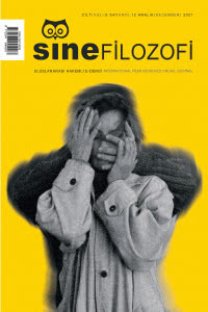Comparative Analysis Between the Cinema of Yılmaz Güney and Dariush Mehrjui A Contextual Analysis of two Films: Hope and The Cow
Yılmaz Güney, Dariush mehrjui, Anthony Giddens, Yapılandırma Kuramı, sinema
Comparative Analysis Between the Cinema of Yılmaz Güney and Dariush Mehrjui A Contextual Analysis of two Films: Hope and The Cow
yılmaz Güney, Dariush Mehrjui, Anthony Giddens, The Structuration Theory, Cinema,
___
- Berkes, N. (2016). Getting Modern in Tuurkey. Ankara: Yapi Kredi Publications.
- Coneydi, F.(1969). The Life and Migration of the Aryans According to Iranian Narratives. Tehran: Bonyad Neyshaboor.
- Fahrettin, V. (2016). Analysis of the Ideological and Realistic Cinema Language of Yılmaz Güney. Master's Thesis. University of Ordu. Retrieved from: http://earsiv.odu.edu.tr:8080/xmlui/handle/11489/473
- Giddens, A. (1981). A Contemporary Critique of Historical Materialism. USA: University of California Press. (1984). The Constitution of Society: Outline of the Theory of Structuration.
- Huaco, G. (1983). Sociology of Cinema. Tehran: Ayene Publication.
- Jamadi, S. (1996). Cinema and Time. Tehran: Shadegan Publication.
- Kinder, M. (2006). Aesthetics of Digital Cinema. Tehran: Markaz Publication.
- Laleh, A. (2015). The Footprints of İranian Literature on İranian Cinema. İstanbul: Dört mevsim Publication.
- Layder, D. (2019). Modern Social Theory: Key Debates and New Directions. Tehran: Aradman Publication.
- Leskiewicz, M. (2004). Towards an Ontological Revival of Legal Theory, part II: Metodological Ethics, Bourdiue, Giddenes and De Ceteau. Journal of Social Sciences. 1(1), 1-31. Retrieved from: https://social.um.ac.ir/article_38901_1a253cd717bc96c132019b8b023f2da4.pdf
- Mazandarani, S. Gabanchi, N. (2015). Psychoanalytic Critique of Folk Beliefs and Actions in Bayal's Mourning Story Written by Gholam Hossein Saedi. The Journal of Contemporary Persian Literature. 6(1), 25- 50. Retrieved from: http://ensani.ir/fa/article/382627/نقد-روانکاوانه-باورها-و-کنش-های-عامیانه-در-مجموعه-داستان-عزاداران-بیل-غلامحسین-ساعدی
- Mehrabi, M. (1992). The History of İranian Cinema from the Beginning to 1979. Tehran: Peykan Publication.
- Omid, J. (1998). The History of İranian Cinema. Tehran: Rowzane Publication.
- Pierson, Ch. (1996). The Modern State. Tehran: Kavir Publication.
- Rose, J. (1998). Evaluating the Contribution of Structuration Theory to the İnformation Systems Dicipline. Retrieved from: https://www.researchgate.net/publication/228687536_Evaluating_the_Contribution_of_Structuration_Theory_to_the_Information_Systems_Discipline/citation/download
- Scognomillo, G. (2003). The History of Turkish Cinema, Turkey: Kabalcı Publication.
- Tahami Nejad, M. (2014). What Do We Know About İran. Tehran: Pajuhesh haye farhangi.
- Taydaş, N.(2015). The Cinema of Yılmaz Güney. Ankara: Alter publication.
- Turner, J. (1984). The Structure of Sociological Theory. Tehran: Navid Shiraz publishing.
- Wollen, P. (1998). Signs and Meaning in Cinema. Tehran: Soroush Publications.
- Yayın Aralığı: 2
- Başlangıç: 2016
- Yayıncı: Serdar Öztürk
The Suffragette Movement: Through Anguish and Resolution Emancipation Was Achieved
Looking at Cinema through the Perspective of Kant’s Ethics
Agnes Varda ve Spinoza’nın Özgürlük Anlayışı: Sans Toit Ni Loi (Yersiz Yurtsuz) Filmi
Tekinsiz Bir Hayaletin Musallat Oluşu: Gelincik (Benli, 2020)
Prenses ve Kurbağa Animasyonunun Jungiyen Analizi: Kapitalizmin Gölgesindeki Kolektif Psişe
“YouTube’da Nietzsche Üzerine Bir Kısa Film İzledim”: Dijital Karşılaşmalar Çağında Sinema Deneyimi
İktidar Duvarlarını Yıkmak: Agnès Varda Sinemasında Heterotopya Mekân
